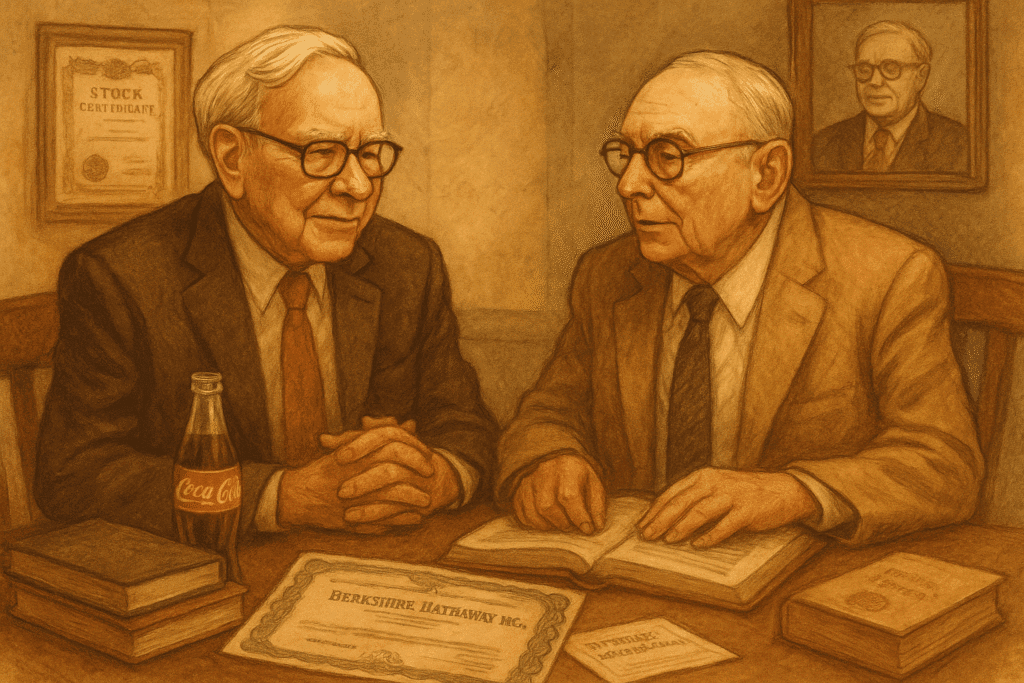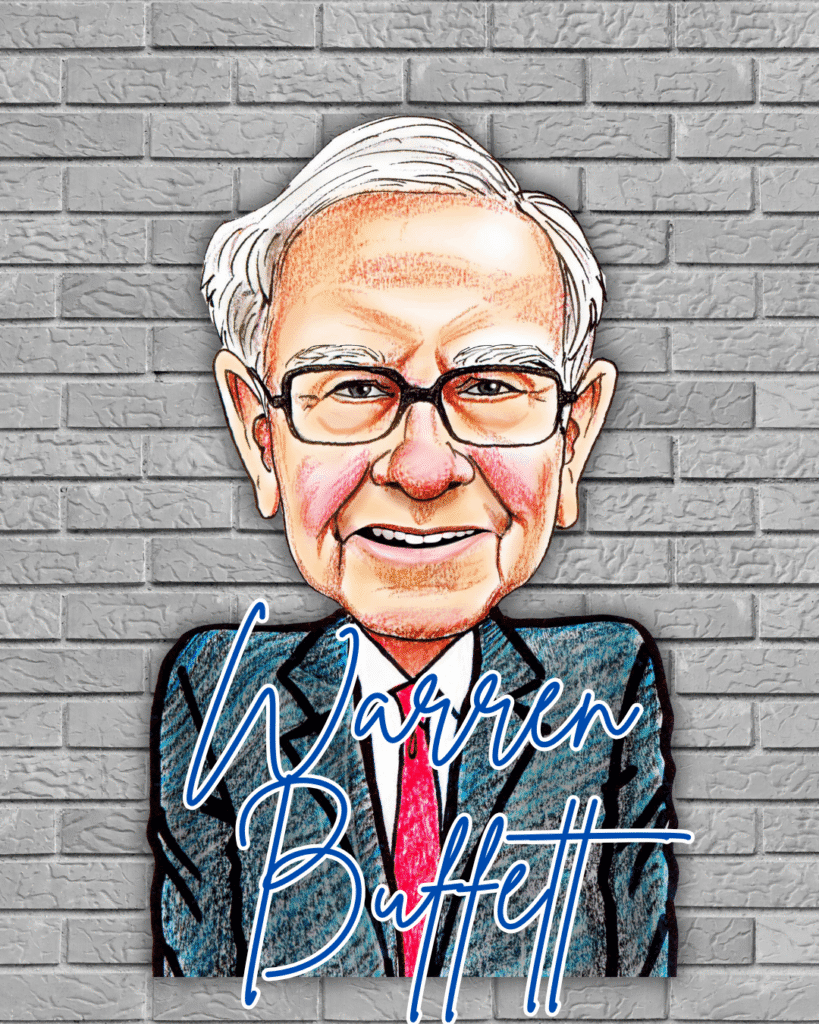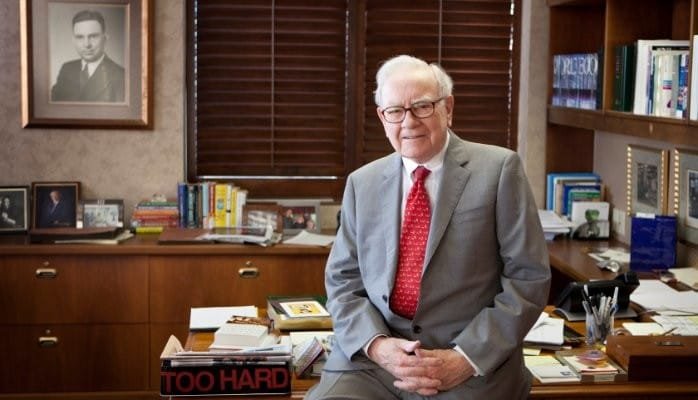Warren Buffett’s Timeless Quotes on Investing, Life, and Success
And Charlie Munger’s take on these principles!
Warren Buffett has a ton of timeless quotes! Pulling the top 10 from these was a challenge, but we were excited about this challenge. In the 2025 Berkshire Hathaway Annual Meeting, Buffett stepped down as CEO of Berkshire Hathaway, concluding a remarkable 60-year tenure. His leadership transformed a struggling textile company into a global conglomerate, valued at $1.1 trillion (as at May 2025). Apart from his investment acumen, Buffett who was voracious reader, also shared with Berkshire shareholders and fans the secrets to success and how to live a good life. These principles are so timeless that they will be remembered, re-read, re-quoted and re-learnt by investors, entrepreneurs and Berkshire fans for the coming decades.

1. “Rule No. 1: Never lose money. Rule No. 2: Never forget Rule No. 1.”
Principle: Prioritize capital preservation. Avoid unnecessary risks that can lead to permanent loss.
Example: During the 2008 financial crisis, while many investors panicked, Buffett invested $5 billion in Goldman Sachs, securing preferred shares with a 10% dividend and warrants to buy common stock at a favorable price. This cautious yet opportunistic move exemplified his commitment to preserving capital while seizing opportunities.
Munger’s Take: Charlie Munger often emphasized the importance of avoiding stupidity over seeking brilliance, aligning with Buffett’s focus on not losing money.
2. “The most important investment you can make is in yourself.”
Principle: Investing in personal development yields the highest returns.
Example: Early in his career, Buffett took a Dale Carnegie public speaking course to overcome his fear of speaking. This investment in himself enhanced his communication skills, crucial for his success in business and investing. In fact, Buffett became such a public figure in his forties that he had to regularly speak in public for the rest of his life. He always recalled how much that Carnegie course helped him!
Munger’s Take: Munger believed in the power of multidisciplinary learning, encouraging the acquisition of diverse knowledge from various, often unrelated fields such as physics, chemistry, biology, anthropology, history, etc. to broaden the perspective.
3. “Don’t play games you can’t win.”
Principle: Operate within your circle of competence. Avoid situations where you lack understanding or in-depth knowledge. As an investor, if you don’t know enough about the underlying business, betting on such a business can lead to losses which could have been avoided.
Example: Buffett famously avoided investing in technology companies for years, citing a lack of understanding. This discipline protected him from the dot-com bubble.
Munger’s Take: Munger advised, “Knowing what you don’t know is more useful than being brilliant,” reinforcing the importance of recognizing one’s limitations.
4. “It’s far better to buy a wonderful company at a fair price than a fair company at a wonderful price.”
Principle: Quality businesses purchased at reasonable prices outperform mediocre ones bought at cheap prices.
Example: The acquisition of See’s Candies in 1972 marked a shift in Buffett’s investment philosophy. Despite a higher price, the company’s strong brand and consistent earnings made it a stellar long-term investment. Buffett often attributes this shift in mindset to Charlie Munger, since it was Munger who encouraged Buffett to concentrate on higher quality businesses.
Munger’s Take: Munger believed that buying a mediocre business, even at a low price, often leads to trouble because those businesses tend to stay mediocre or get worse. The management might be poor, the industry tough, and capital returns weak. He advocated for quality and durability: strong brands, pricing power, good management, and high returns on capital over time.
This mindset was critical in investments like See’s Candies, where Buffett initially hesitated due to the price. Munger insisted it was worth paying more for a great business with enduring consumer loyalty and pricing power. That $25 million investment made in 1972 has produced billions of dollars in pre-tax earnings for Berkshire over the years.
5. “Risk comes from not knowing what you’re doing.”
Principle: True risk stems from ignorance. Knowledge reduces uncertainty.
Example: Buffett’s thorough research and understanding of businesses before investing minimized risks. His investment in American Express during the 1960s salad oil scandal, based on deep analysis, proved highly profitable.
Munger’s Take: Munger emphasized the importance of understanding the underlying economics of a business to assess its true risk.
6. “Be fearful when others are greedy, and greedy when others are fearful.”
Principle: Contrarian investing, combined with patience and a psychological edge can yield significant rewards.
Example: In 2020, amid global uncertainty during the COVID pandemic, Warren Buffett made a surprising move by investing over $6 billion in Japan’s five largest trading houses: Itochu, Marubeni, Mitsubishi, Mitsui, and Sumitomo. These companies, often overlooked by Western investors, were trading at low valuations, had strong cash flows, paid generous dividends, and operated across a diversified range of industries from commodities to infrastructure.
But here’s the key strategic layer – Buffett didn’t just invest Berkshire’s cash—he borrowed yen in Japan at very low interest rates, often close to 0.5-1%, to fund these purchases. Thanks to Japan’s long-standing low-rate environment, Berkshire was able to minimize currency risk and borrowing costs, turning the trade into a high-return, low-risk proposition.
As Buffett said in a 2021 interview:
“We’re not doing anything that’s complicated. We’re just using the fact that we can borrow money in Japan very cheaply… These are good businesses.”
This brilliant move illustrated how Buffett pairs deep value analysis with capital structure optimization—a rare combination. It also showed Buffett’s willingness to step outside the U.S. when the opportunity was right.
Munger’s Take: Munger supported this approach, stating that the best opportunities often arise during periods of widespread pessimism. Charlie Munger always emphasized going where the opportunity is, especially when others aren’t looking.
7. “The stock market is designed to transfer money from the Active to the Patient.”
Principle: Long-term, patient investors often outperform active traders.
Example: Berkshire’s incredible record of compounding its stock price at 19.9% for 60 years is proof that the long-term, (almost) permanent ownership of holdings, like Coca-Cola, Washington Post, American Express, demonstrate the power of patience in compounding wealth.
Munger’s Take: Charlie Munger despised unnecessary activity. He believed most investors hurt themselves by trying to be clever, jumping in and out of positions, reacting emotionally to news, and mistaking motion for progress. He once said:
“The first rule of compounding: Never interrupt it unnecessarily.”
— Charlie Munger
And:
“The big money is not in the buying and the selling… but in the waiting.”
— Charlie Munger
8. “Be a continuous learning machine.”
Principle: Lifelong learning is essential for success.
Buffett’s Story: Buffett dedicates a significant portion of his day to reading and learning, staying informed and adaptable in a changing world. Rise With Drew
Munger’s Take: Munger emphasized the importance of multidisciplinary learning, encouraging the integration of knowledge from various fields to make better decisions.
9. “Wait for the big fat pitch.”
Principle: Patience in investing leads to better opportunities.Yahoo Finance
Buffett’s Story: Buffett compares investing to baseball, suggesting that investors should wait for the perfect pitch before swinging, avoiding impulsive decisions.
Munger’s Take: Munger supported this metaphor, highlighting the importance of waiting for opportunities that fall within one’s circle of competence.
10. “Price is what you pay. Value is what you get.”
Principle: Focus on intrinsic value rather than market price.
Berkshire Story: Buffett’s investment decisions are based on the intrinsic value of a company, not just its market price, ensuring long-term profitability.
Munger’s Take: Munger emphasized understanding the true value of a business, advocating for investments in companies with durable competitive advantages.
Final Reflection
Warren Buffett’s retirement marks the end of an era, but his principles remain timeless. Alongside Charlie Munger, Buffett’s wisdom will continue to guide investors to take a patient, disciplined, approach to investing. .
Shop the Warren Buffett Canvas Print
If you like the above Buffett quotes, check out our Canvas Print which captures the above quotes on this beautiful Canvas:
Canvas Print with Warren Buffett success quotes and caricature
Explore Buffett & Munger-Inspired Collectibles
Alternatively, you can also check out other unique collectibles in the Charlie Munger and Warren Buffett Collections:





